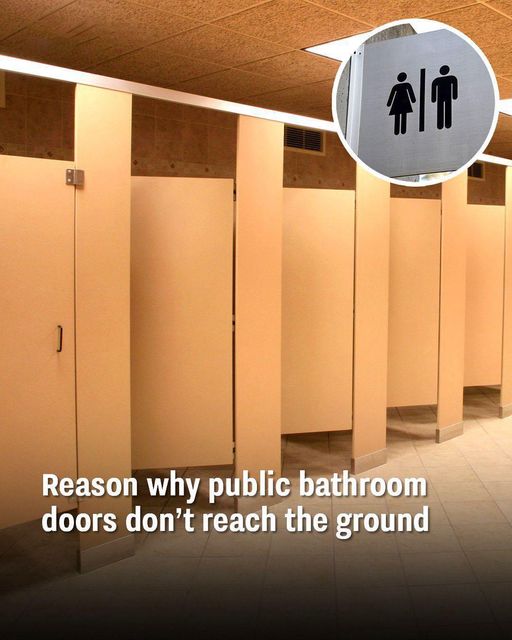Have you ever noticed how public bathroom stall doors never quite reach the floor? This seemingly odd design choice isn’t just a random decision; it serves several practical purposes that enhance safety, hygiene, and cost efficiency.
Safety First: Emergencies Inside and Outside the Stall
One of the most critical reasons for the gap at the bottom of public restroom doors is safety. If someone were to collapse or experience a medical emergency inside a stall, the open space allows others to see and assist them quickly. In a fully enclosed stall, a person in distress might go unnoticed for an extended period, which could be dangerous, especially in busy or high-traffic areas.
Additionally, this design allows for a quick escape in case of emergencies like a fire. If the lock jams, individuals trapped inside a stall can crawl out through the gap, potentially saving their lives.
Enhanced Cleaning Efficiency
Public restrooms see a lot of foot traffic, making cleanliness a top priority. The gap at the bottom of the doors allows for easier cleaning. Janitorial staff can mop the entire floor without needing to open each stall door, ensuring a more thorough and efficient cleaning process. This design also helps in quickly identifying and cleaning up messes, which contributes to maintaining a more hygienic environment overall.
Cost-Effectiveness
Believe it or not, the partial doors are also a cost-saving measure. Doors that don’t extend to the floor use less material, making them cheaper to manufacture and install. Over multiple stalls, this cost-saving adds up significantly, especially in large facilities like malls, airports, or stadiums where dozens of stalls are required.
Encouraging Proper Stall Use
Another practical aspect of this design is that it discourages improper use of the stalls. Since the doors don’t provide complete privacy, people are less likely to engage in inappropriate activities inside the stalls. This openness encourages quicker usage and turnover, reducing wait times during busy periods.
Better Air Circulation
The gap also facilitates better air circulation within the restroom. Fully enclosed spaces can trap unpleasant odors and moisture, making the restroom environment less comfortable. The open space allows air to flow more freely, helping to keep the area fresher and reducing the buildup of odors.
Deter Vandalism
While it might not seem immediately obvious, the partial privacy offered by these doors can also deter vandalism. With the lower part of the stall visible, individuals are less likely to feel they have the anonymity needed to engage in destructive behavior without being caught.
Conclusion: A Design With Purpose
While the design of public bathroom doors might seem inconvenient or puzzling at first, it’s clear that every aspect serves a specific purpose, from safety to hygiene to cost savings. Next time you find yourself in a public restroom, you can appreciate the thought and planning that went into creating a space that balances privacy with practicality.

